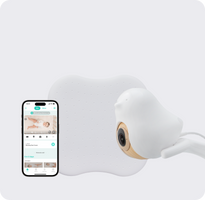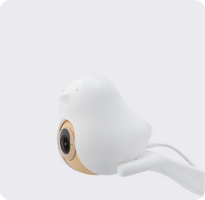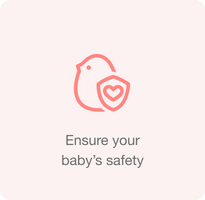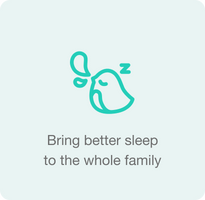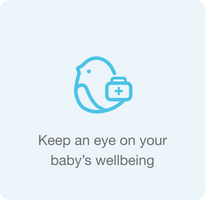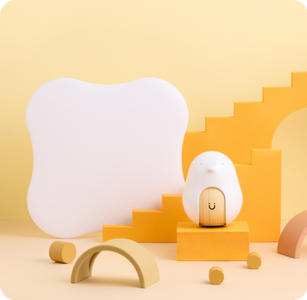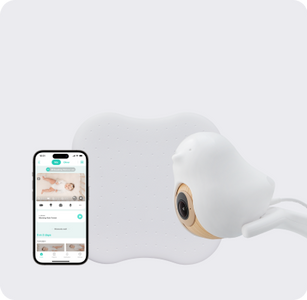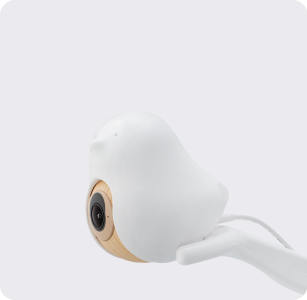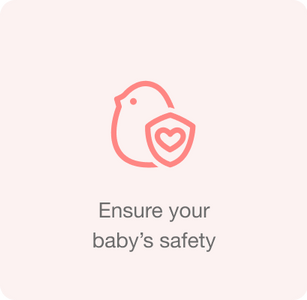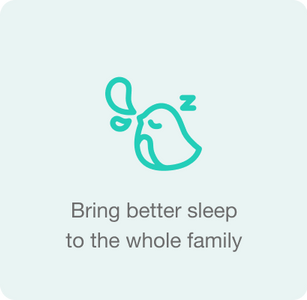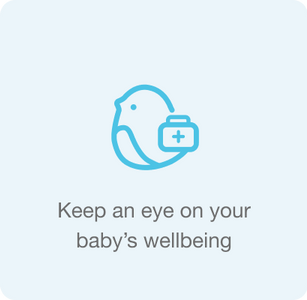Top 5 Most Common Sleep Training Methods
Sleep training your baby can be a daunting task for any parent. For some, it’s quick and easy, others just can’t seem to accomplish the mission at hand. Whatever your experience, don't worry! Here are the Most Common Sleep Training Methods so you can find what's right for you!
Sleep training your baby can be a daunting task for any parent. Some parents decide to do it right away, others wait until their little one is over a year old. For some, it’s quick and easy, others just can’t seem to accomplish the mission at hand. The hardest part of sleep training isn’t your baby learning how to go to sleep without soothing, it’s your baby unlearning unsustainable sleeping methods.
It’s okay! Regardless of where you are on the journey to sleep train your baby, know that every baby is different and you are 100% allowed to choose what’s best for your family. If you’re curious about when your baby is developmentally ready, check out this infographic.
If you’re looking for the best sleep training method or if you didn’t even know there was more than one, you’re in the right place! We’re going to break down the most common sleep training methods for baby so you can assess and get started ASAP. Just think, soon you’ll be sleeping better too!
How to Prepare (Before You Fully Commit to Sleep Training)
Not sure if you’re ready to go straight into sleep training? Maybe you have a big event coming up or too much on your plate. Here are some tips to start encouraging healthy sleep habits in your baby.
- Try to get your baby to be full during the day to teach them daytime is for eating (and other activities) while nighttime is just for sleeping.
- Schedule time for sleep. Whether it’s nap time or bedtime, having a clear schedule helps. Even if your baby isn’t very on board, their sleep schedule will eventually adjust.
- “Was that a whimper or a cry?” Never wonder again. You can adjust the settings on your smart baby monitor app to only alert you when your baby is crying and not when it’s just a sleepy whimper. Want to be notified either way? You can do that too!
- Use daylight to your advantage. You can work with our bodies’ natural systems for differentiating night and day by opening the blinds in your baby’s room in the morning and taking them outside during the day. Their body will naturally send those sleepy signals once the sun goes down, just remember to keep their sleeping area dark. Noise machines with white noise or lullabies are helpful too!
See also: 3 Risks of Baby Sleeping on Stomach
The Top 5 Sleep Training Methods for Baby
1.The Pick-Up-Put-Down Sleep Training Method
2.The “Camping Out" or "Chair" Method
3.The “Fading” Method
4.The Ferber Method
5.The Extinction/ Cry-It-Out Method

1. The Pick-Up-Put-Down Sleep Training Method- PU/PD (Recommended for 4-8 months old and beyond)
While The “Cry-it-out method” which we’ll get to shortly, is the one that splits parents the most, the Pick Up, Put Down Sleep Training method gets plenty of thumbs-downs as well. This, of course, says more about how different babies respond to sleep training than how good or bad the method actually is. The method was popularized by Tracy Hogg in her book, Secrets of the Baby Whisperer: How to Calm, Connect, and Communicate with your Baby.
The goal
It’s important to note that the goal of this method isn’t a baby who independently goes through the sleep process, it’s a baby who goes to sleep without feeling abandoned.
Pick Up, Put Down Done Right
This is a very taxing method for both baby and parent. It’s recommended that you have help and don’t do it on your own to give your back some relief.
After you’ve chosen your designated Sleep Training Partner, set a bedtime routine during which you prepare your baby for sleep, but put them to bed before they’re asleep. This routine can include bathtime, reading a bedtime story, feeding, etc. If you put your baby in the bassinet or crib and they don’t fuss, leave the room and listen in at the door or through your smart baby monitor on your phone.
Is your baby crying? This is the “stop, wait, and listen” moment of the method. See if they’re just fussing or need comfort. How long you wait is really up to you. Some mothers wait 2 minutes, others more. If the crying continues, return, pick your baby up for a moment to comfort them and then put them down again, while they’re still awake to go to sleep on their own. Repeat the process until they’ve fallen asleep. Again, this is really difficult because it could take a really long time.
Is your baby crying? This is the “stop, wait, and listen” moment of the method. See if they’re just fussing or need comfort. How long you wait is really up to you. Some mothers wait 2 minutes, others more. If the crying continues, return, pick your baby up for a moment to comfort them and then put them down again, while they’re still awake to go to sleep on their own. Repeat the process until they’ve fallen asleep. Again, this is really difficult because it could take a really long time.
Sleep Training is a long commitment so not waiting long enough can be a deterrent to figuring out whether it works for your baby or not. It depends on their personality and temperament. Some babies need exactly this, others are woken up by the picking up and putting down and get cranky.
2. The "Camping Out/Chair Method (Recommended for 6+ Months Old)
The “Camping Out” or “Chair Method” is a method recommended for 6+ month-old infants who are particularly anxious. It allows them to build the skills to settle themselves for sleeping without needing to be held nor having to cope with feelings of abandonment. It’s not any faster, however. It will also take weeks or more to fully adapt but can be easier for everyone involved than PU/PD, especially physically.
The goal
This method helps your baby get used to not needing to be patted, cuddled, or soothed to sleep by transitioning away.
Best Tips for Camping Out
- Don’t make eye contact. Try closing your eyes or looking up at baby’s nursery. Avoid
- Dim the room and lower volume of any external sounds. Try to avoid music, stories, singing, and any lights. All of this could become something the baby depends on later in order to sleep.
- There will probably be crying (we won’t judge you if it’s you). Only you know when your baby has had enough and should be soothed.
How To “Camp Out” For Baby’s Sleep
Like before, creating a bedtime ritual with your baby so they know it’s time to start settling to sleep. Keep the routine the exact same every night. However, put them in their bed before they’re asleep. Set up a chair or space in your baby’s room near them where you can sit or stand to help them feel accompanied. Some sources even recommend a cot or a mattress.
- First, you can start by rubbing their back and comforting them for the first few nights until they fall asleep. Then leave the room.
- After a few nights, once your baby is used to this, stay where you are but don’t touch them if possible, speak to them if needed to remind them of your presence.
- Then, create more and more space, whether moving to the chair, cot, or mattress, or by stepping away, once your baby is asleep, leave the room.
- Move the cot, chair, or mattress closer and closer to the door and out of the baby’s room. (this could take a few weeks).
- If your baby wakes during the night, return to the last step you’re at (the chair, the bedside, etc. stay there, where your baby can see you until they’re asleep.
3. The "Fading Method (Recommended for 4+ Months Old)
This method comes recommended in Kim West’s The Sleep Lady’s Good Night, Sleep Tight. She’s a child and family therapist. According to her, it’s a method that can minimize frustration (though not time) and maximize reassurance, for those who want to avoid extensive crying and trauma. You can also find mentions of it in Julie Wright and Heather Turgeon’s The Happy Sleeper.
Some suggest that the “Fading Method” and the “Camping out Method” are the one and the same. We dare to disagree. Sure, Kim West’s method mentions a lot of the same “shuffling away” of the Camping Out/ Chair Method. In fact, the Fading Method is also a transition method but could involve as many or as few chairs as you’d like. With this method, you don’t need to change your baby’s routine. Keep up whatever has been working, which you’ll start to fade out over the next few weeks. Need help? Use a Sleep Training Log.
The Goal
What you’re trying to do is fade out your baby’s current bedtime routine until they no longer need it in order to sleep.
Why it’s Popular
Some Parents love it because you can train at your own pace. Is your baby particularly attached to one stage of the fade-out? Stay there for a few more days. Are they moving along quickly? Speed through. Fading out is mostly up to the parents, so other parents prefer a more broken down method with clear steps.
4. The Ferber Method (Recommended for 5+ Months Old)
The Ferber Method sometimes gets called the “Cry-It-Out” Method though it’s really just a progressive method of reassuring your baby at different intervals. This method is covered in Dr. Richard Ferber, M.D.’s Best-Selling book Solve Your Child’s Sleep Problems. It was published in 1985 and updated in 2006.
Many of Dr. Ferber’s biggest critics have never actually read his books, thinking he encourages parents to let their children cry themselves to sleep with no comfort whatsoever. However, Dr. Ferber is all about carefully planning a bedtime routine and what he calls “Progressive Waiting”.
The Goal
To train babies to soothe themselves to sleep, recognize bedtime and go to sleep effortlessly, while also falling back asleep on their own when they wake during the night. If done correctly, Dr. Ferber says this training can be done in just a few nights.
Common setbacks
Dr. Ferber says most often parents fail because they aren’t consistent. They get overtired after a few days and pick up the baby to console them to sleep, undoing the whole process. This is why it’s important to make sure you can be consistent or find a Sleep Training Partner.
After you’ve created your stable bedtime routine with as least distractions as possible (lights, music, holding, etc.) put your baby in the crib while they’re awake and leave the room. Let them cry for progressively longer amounts of time before coming in to check on them. The first night, try every 3 minutes, then 5, then 10, and stopping at 10 if you see that they’re not progressing.
If on any night your baby goes to sleep but wakes up later in the middle of the night, start again at 3-minute intervals. The number of minutes is flexible, according to Dr. Ferber, as long as it’s progressive every time.
Dr. Ferber’s Tips for this method
- Read the whole book
- Start a time when you can lose some sleep
- Be consistent
- Set your baby’s bedtime to when they typically fall asleep
- Set limits. Only one bedtime story, no glasses of water, staying in their room, etc.
- Consider using a countdown timer for the progressive approach
- Reconsider if you don’t see improvement after 3-4 nights
5. The Extinction Method (The "Cry-It-Out" Method)
Last and most-criticized, we have the “Cry-It-Out” Method. Most parents, as we’ve mentioned, have a problem with this method because nobody wants to hear their child crying and screaming for comfort without being able to give it to them. To many, it sounds cruel.
The Goal
Just like many other sleep training methods for babies, this one’s objective is to teach your child to fall asleep without your help. When your baby wakes up in the middle of the night, they’ll be able to fall back asleep alone.
How it Works
Once again, go through your baby’s bedtime routine with them and place them in the crib drowsy but not asleep. Say goodnight and leave the room. Some parents will stop there, regardless of how much your baby cries, they’ll only go in when it sounds like they’re genuinely hurt. However, many parents go back at increasingly long intervals to briefly reassure them and then leave again.
Parents vouch for this method because they say comparatively if you add up all the nights of difficult sleep and intermittent crying vs a few nights of long cries, this method results in fewer tears overall and a faster result.
Whatever you decide to do, keep in mind that the best tips are consistency, preparation, and lots of will power. Best of luck!



